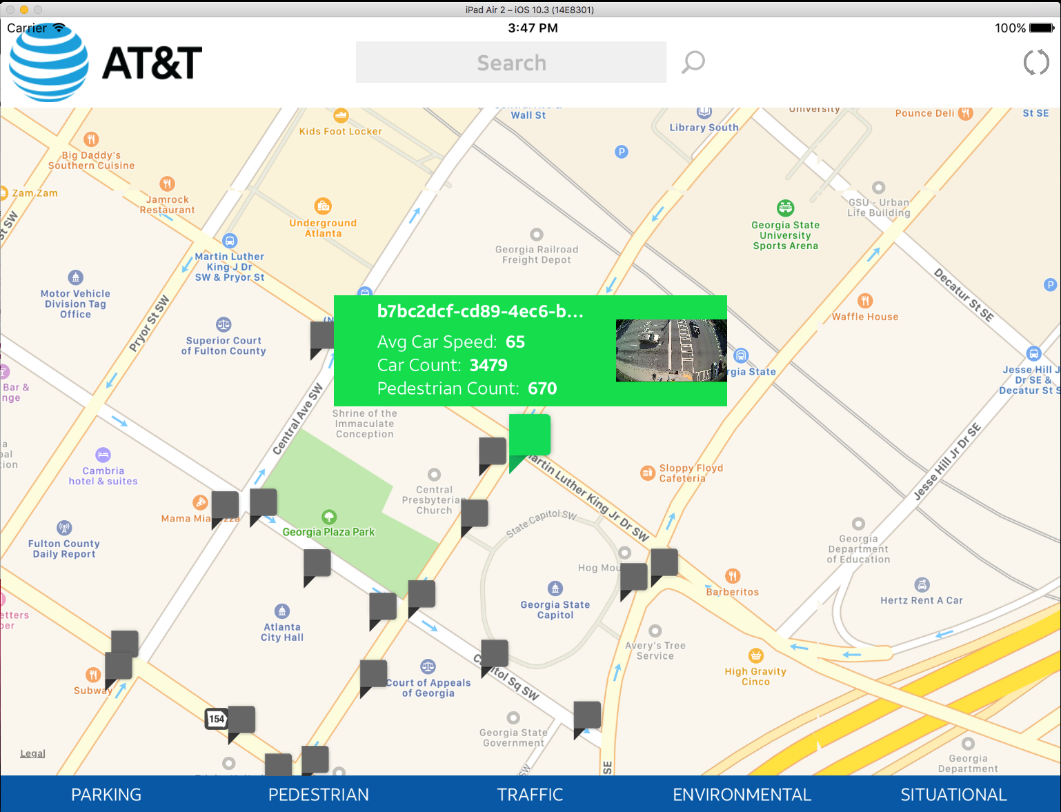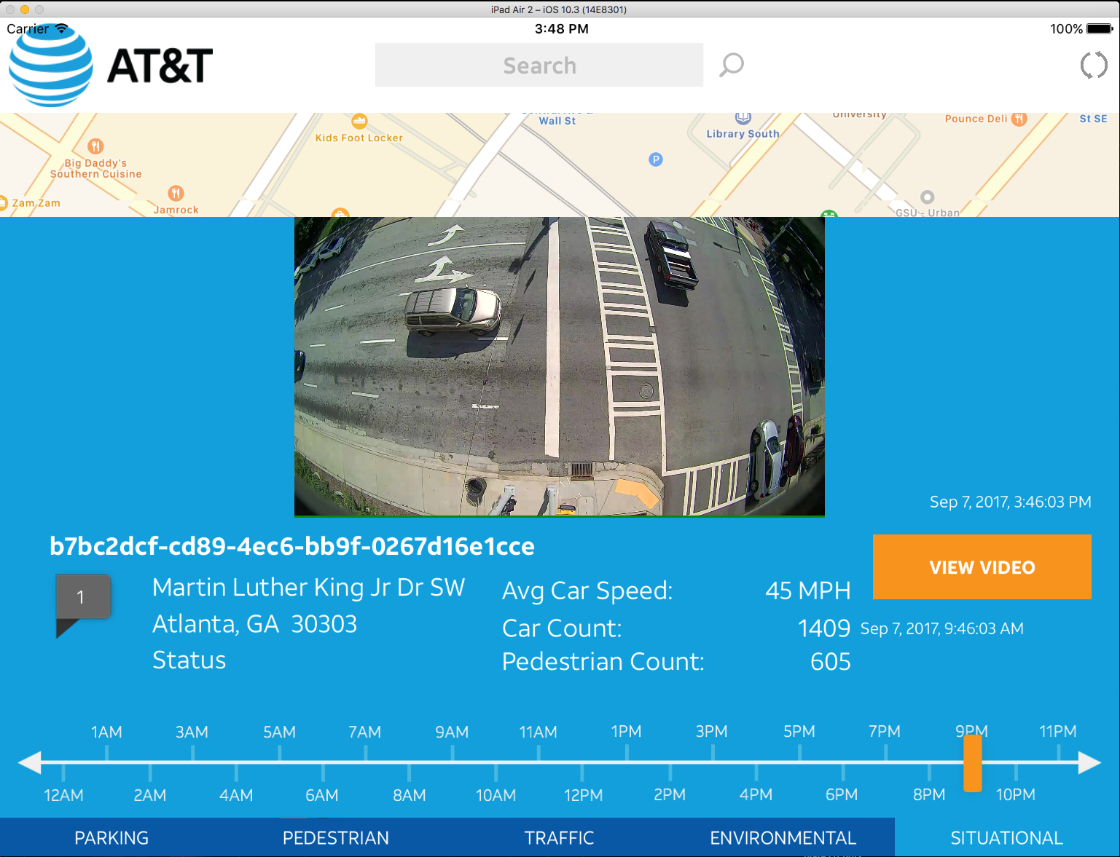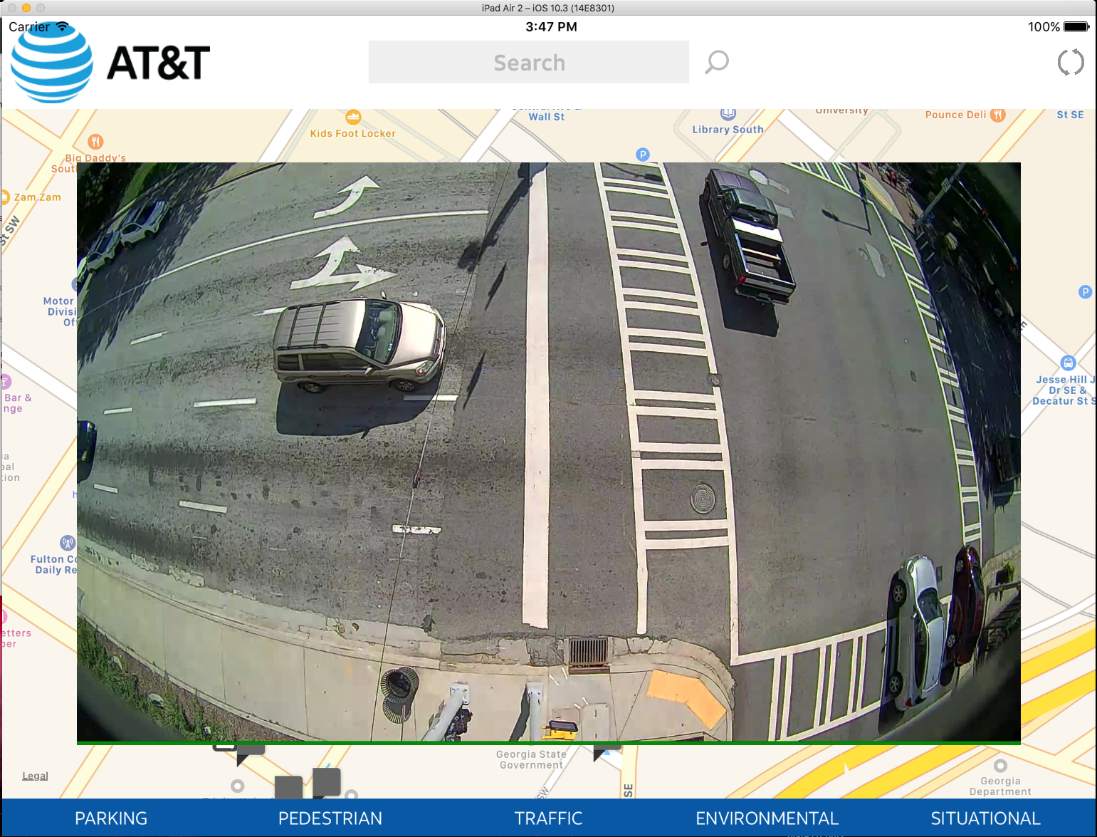It came as no surprise when the AT&T Smart Cities team asked my team to build a mobile app to enhance its expanding smart cities portfolio. The AT&T Foundry in Atlanta has worked with the Business Solutions group from the start to deliver innovative smart cities tools and apps. And do it quickly.
So, we were up for the challenge. For us, a smart city is more than connecting city components like street lights, parking meters and buildings. We seek creative ways to add intelligence to city operations by building in analytics, communication and data – to improve the urban experience.
Atlanta’s made great strides as one of the first cities in AT&T’s Smart Cities program. A major focus is building a digital framework using one of a city’s key components – light posts.
In Atlanta, we’re using intelligent nodes and sensors to explore ways to transform the existing LED street lighting infrastructure. The AT&T Digital Infrastructure solution will accelerate the digital era of urban development. This area is ripe with possibilities.
Why? The intelligent nodes use an open application programming interface (API). That means we could use individual data points from the existing nodes across the city, and combine the data from them in a unique way to create something new.
The technology includes cameras and environmental sensors to help monitor things like traffic flow and parking. It also can help monitor air quality and provide weather emergency alerts in the city. The combined sensors within the city make up a digital framework.
To enhance the framework, we built and tested a mobile app that remotely monitors outdoor events, foot traffic, car counts, parking and even temperature changes. The app was designed to associate with the closest street light node with a nearby event within minutes. It then feeds the data into the holistic smart city framework.
For example the app can help remotely monitor if there’s little to no movement on the street. Or say there’s a lot of foot traffic for a public event. It could also be used to help detect gunshots. Using existing camera sensors, the app can help public officials monitor the high-traffic area, helping to keep everyone is safe.
The app proves what’s possible when you combine information from an API with data from an existing source. In this case, it helps enhance the existing digital infrastructure. And, its data can serve as a foundation for future smart city improvements.
We completed the first major iteration for the app in 2 months. And we even got to demo it for the AT&T Smart Cities Team and at some trade shows. We expect that the next major phase will include a few more tweaks, transcoding and added video processing. The greatest part of working on this was the creative freedom. The AT&T Foundry is trusted within the company to deliver rapid innovation with impactful results. We’re well on our way to making smart cities a reality.

Virginia Ng - AT&T Foundry Innovation Coach







